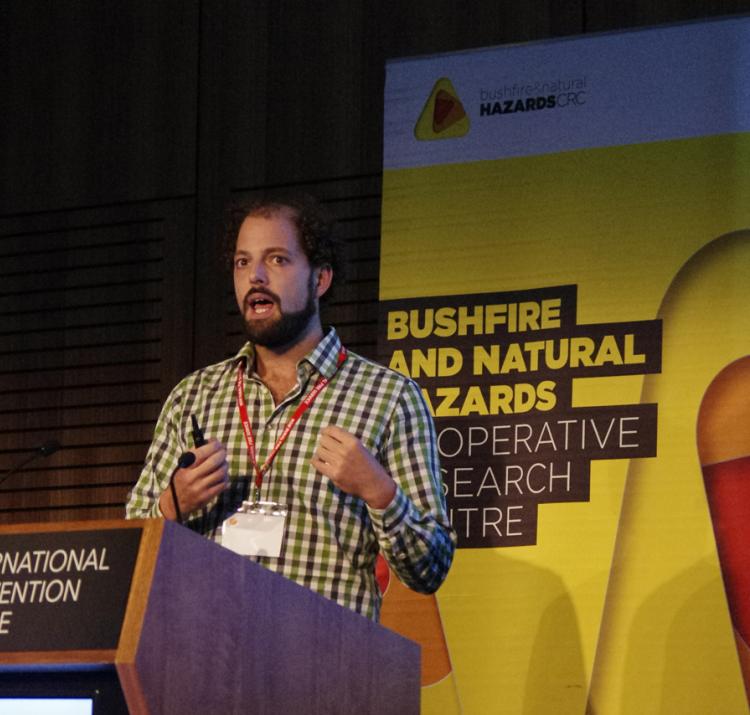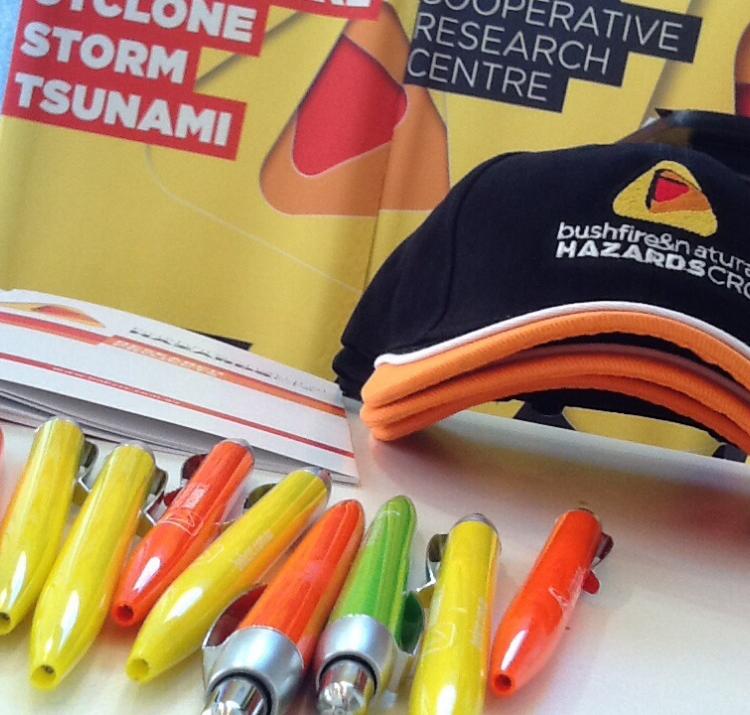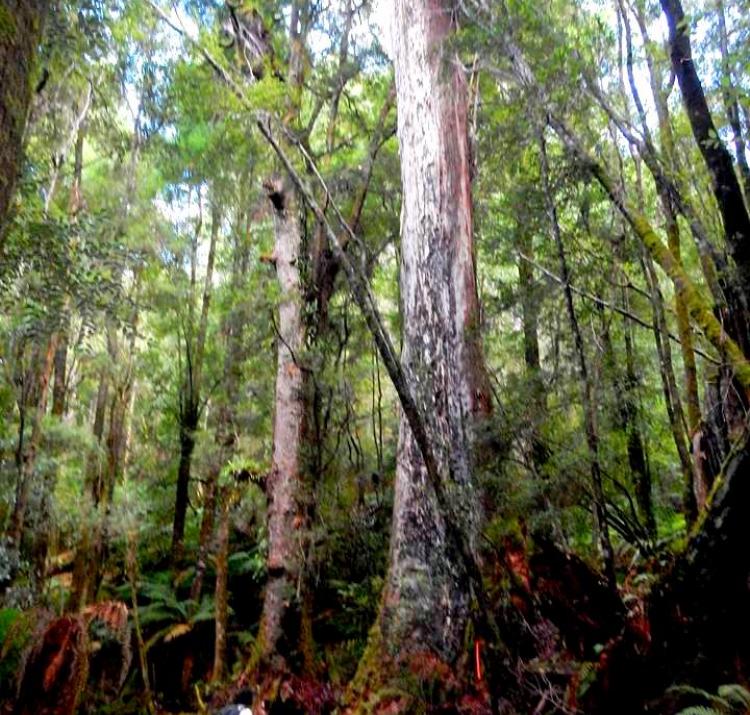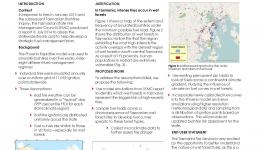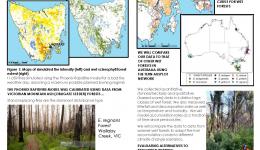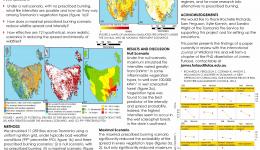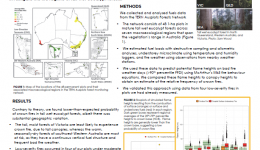Student researcher
Practical experience in Tasmania has shown that the PHOENIX RapidFire behaviour model – a dynamic, spatially and temporally explicit fire behaviour prediction model – is inappropriate for key Tasmanian vegetation types (tall wet eucalypt forests) that are ecologically different than their equivalents on the mainland of Australia (for which the fire prediction model was developed).
This PhD improved the understanding of fuels and fire danger in Tasmania’s tall wet eucalypt forests, possibly Tasmania’s most dangerous vegetation type. Data was collected on vegetation in tall wet eucalypt forests both in Tasmania and nationwide. This data was used to understand how fuel load, structure, and fire danger vary both geographically and temporally across this forest type. This research investigated different fire behaviour modelling approaches from around the world to develop a conceptual framework for modelling fire behaviour in this complex vegetation type.
This project was completed in February 2020.
| Year | Type | Citation |
|---|---|---|
| 2021 | Journal Article | Bioclimatic drivers of fire severity across the Australian geographical range of giant Eucalyptus forests. Journal of Ecology (2021). doi:https://doi.org/10.1111/1365-2745.13663 |
| 2021 | Report | Understanding post-fire fuel dynamics using burnt permanent forest plots. (Bushfire and Natural Hazards CRC, 2021). |
| 2020 | Thesis | How do wet forests burn? : Fuels and fire danger in the world’s tallest flowering forest. Doctor of Philosophy, 222 (2020). |
| 2017 | Journal Article | Simulating the effectiveness of prescribed burning at altering wildfire behaviour in Tasmania, Australia. International Journal of Wildland Fire (2017). doi:https://doi.org/10.1071/WF17061 |
|
Date |
Title | Download | Key Topics |
|---|---|---|---|
| 24 Oct 2016 | Wet forest fuels: managing Tasmania's most dangerous fuel type |
|
fire, fuel reduction, modelling |
| 28 Oct 2016 | James Furlaud - Improving fire modelling for Tasmanian wet eucalypt forests |
|
fire impacts, fire severity, modelling |
| 31 Oct 2017 | Three Minute Thesis: rethinking fuel accumulation curves |
|
environments, fire, risk management |


